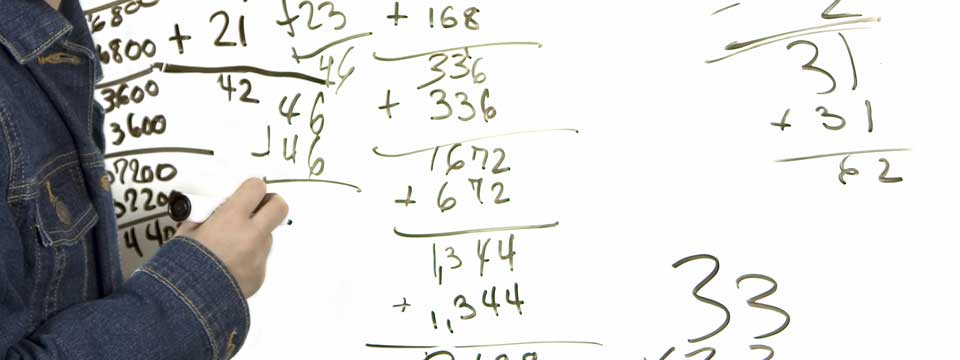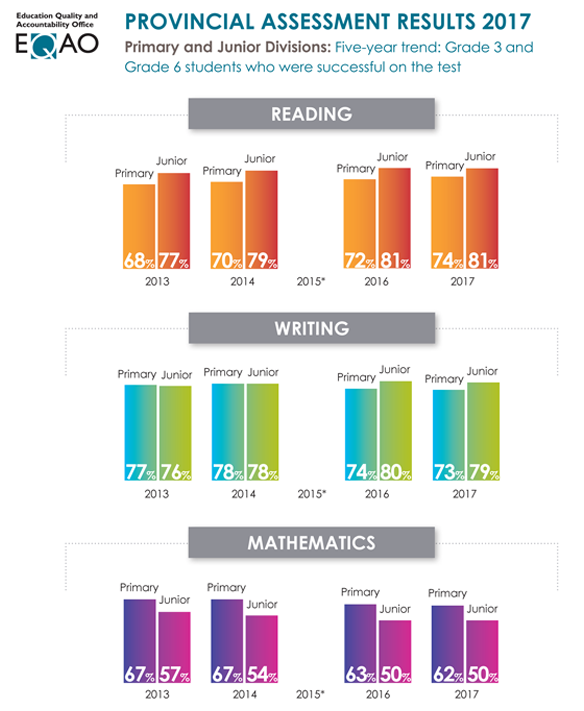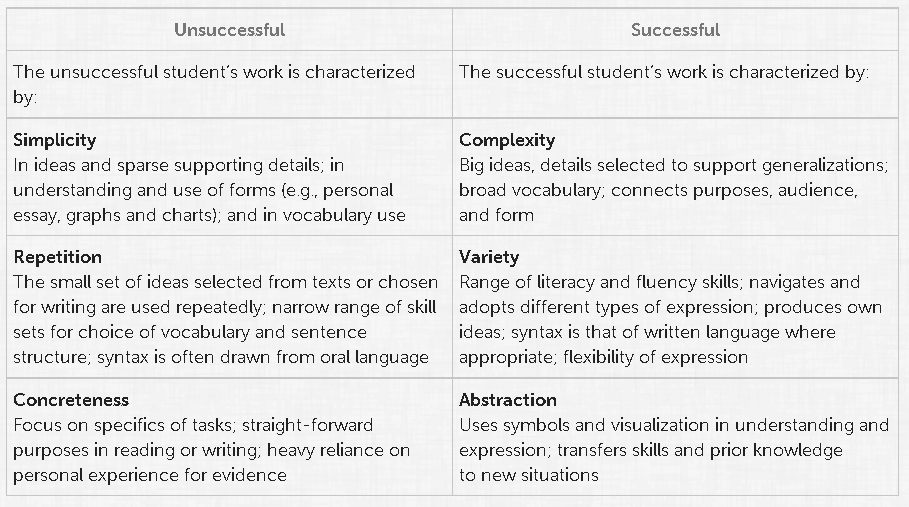 By Pepper Parr
By Pepper Parr
September 3, 2017
BURLINGTON, ON
Households throughout the city begin to get into the routines that are part of getting the kids back into the classrooms.
How well did they do last year and how can parents help their children improve? Just how did your child do last year is a question some parents don’t really know.

Are the students in the Halton Region measuring up to the needed standard?
EQAO – the acronym for the Education Quality and Accountability Office has published the provincial-level results of the primary- and junior-division 2016–2017 Assessments of Reading, Writing and Mathematics written by students in Grades 3 and 6, and of the Grade 9 Assessment of Mathematics.
For the second year in a row, 50% of Grade 6 students met the provincial standard in math. Among Grade 3 students, 62% met the provincial standard—a one-percentage-point decrease since last year.
Not quite sure why that 50% seems acceptable – the number has to be a lot closer to 70% if those students are going to get jobs in the world they are going into.
The breakdown of the numbers by Board of Education get released September 20th – we are told by a source that should know that Halton has done very well – which we hope doesn’t get translated into the complacency that tends to prevail in this part of the world.

Results at a glance – are they good enough? Are the best we can do?
Elementary school reading results for Grade 3 students have increased to 74%, an increase of two percentage points since last year, and reading results for Grade 6 students have remained at 81% for the second year in a row.
Those are good numbers; the minimal decline in writing at the elementary level should be noted and then produce different ways to keep the number at the earlier levels.
Achievement results in writing at the elementary school level have declined since last year by one percentage point for both Grades 3 and 6, and stand at 73% and 79% respectively.
Eighty-three percent of Grade 9 students enrolled in the academic course were successful on the assessment, a result that is identical to last year.
Meanwhile, 44% of Grade 9 students enrolled in the applied math course were successful on the math assessment, marking a one-percentage-point decrease since last year, and continuing the trend over the last five years whereby less than half of students enrolled in the applied math course met the provincial standard.
Applied mathematics are critical for many of the jobs that are going to solve the problem we have as a society. The academic course is producing the needed results – someone wants to be looking at what needs to be done at the applied level.
Some facts to worry about and the focus on finding solutions:
In math at the elementary level, 62% (82 928) of Grade 3 students met the provincial standard, compared to the 67% who did on the 2013 assessment. Of Grade 6 students, 50% (64 686) met the provincial math standard, compared to the 57% who did on the 2013 assessment.
Results from EQAO’s student questionnaire show that a large number of students in Grades 3 and 6 (77%) are motivated to do their best when they undertake math activities in class. Despite this high motivation, only 56% of Grade 3 students and 53% of Grade 6 students believe they are good at math. It is encouraging that motivation remains high, now to translate that into better results.
The gap between motivation and results suggests different approaches might be needed by dthe teachers.
The majority of students who had not met the math standard in Grade 3, but who were able to meet it in Grade 6, carried that success forward into Grade 9.
In math at the secondary level, 83% (80 350) of Grade 9 students enrolled in the academic math course met the provincial standard, compared to the 84% who did on the 2013 assessment. Of Grade 9 students enrolled in the applied math course, 44% (15 321) met the standard, the same percentage of students who did in 2013.
In elementary-school reading, 74% (93 130) of Grade 3 students met the provincial standard, compared to the 68% who did in 2013. Of Grade 6 students, 81% (106 135) met the provincial reading standard for the second year in a row, compared to the 77% who did on the 2013 assessment.
In elementary-school writing, 73% (92 372) of Grade 3 students met the provincial writing standard, compared to the 77% who did in 2013. Of Grade 6 students, 79% (103 450) met the provincial writing standard, up from 76% in 2013.
EQAO is an independent agency that creates and administers large-scale assessments to measure Ontario students’ achievement in reading, writing and math at key stages of their education. All EQAO assessments are developed by Ontario educators to align with The Ontario Curriculum.

Some of the conclusions on the grade 9 literacy testing made by the EQAO researchers
The assessments evaluate student achievement objectively and in relation to a common provincial standard. EQAO is undertaking a multi-year project to move the provincial assessments online.
EQAO provides results to each student who writes an assessment. Its personalized reports help support individual student learning. The agency provides schools and school boards with detailed reports about their students’ achievement, as well as contextual, attitudinal and behavioural information from questionnaires, in an interactive online reporting tool. These data are used to improve school programming and classroom instruction.
EQAO also reports the results of the provincial assessments publicly. This helps keep the public education system accountable to taxpayers.




















